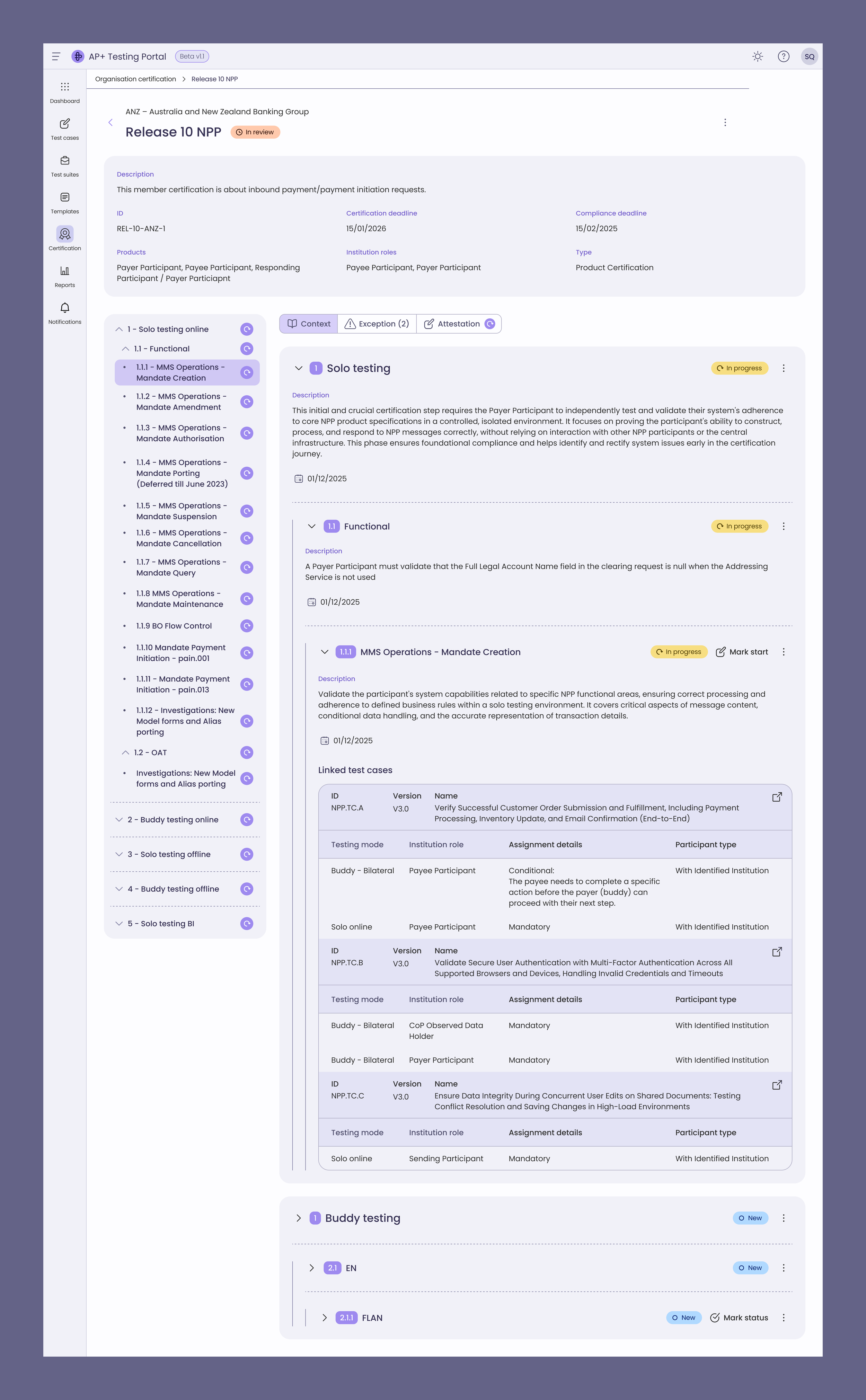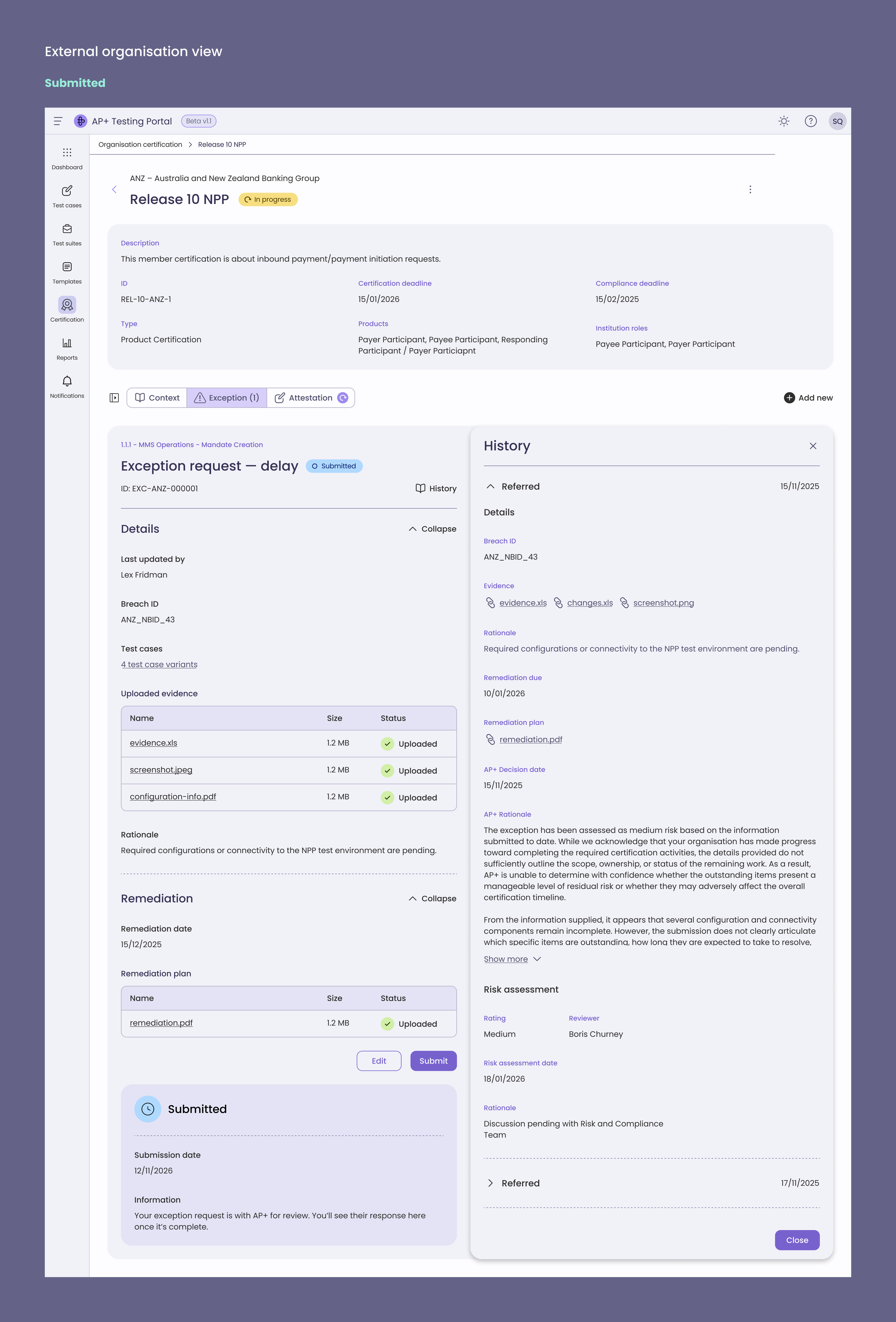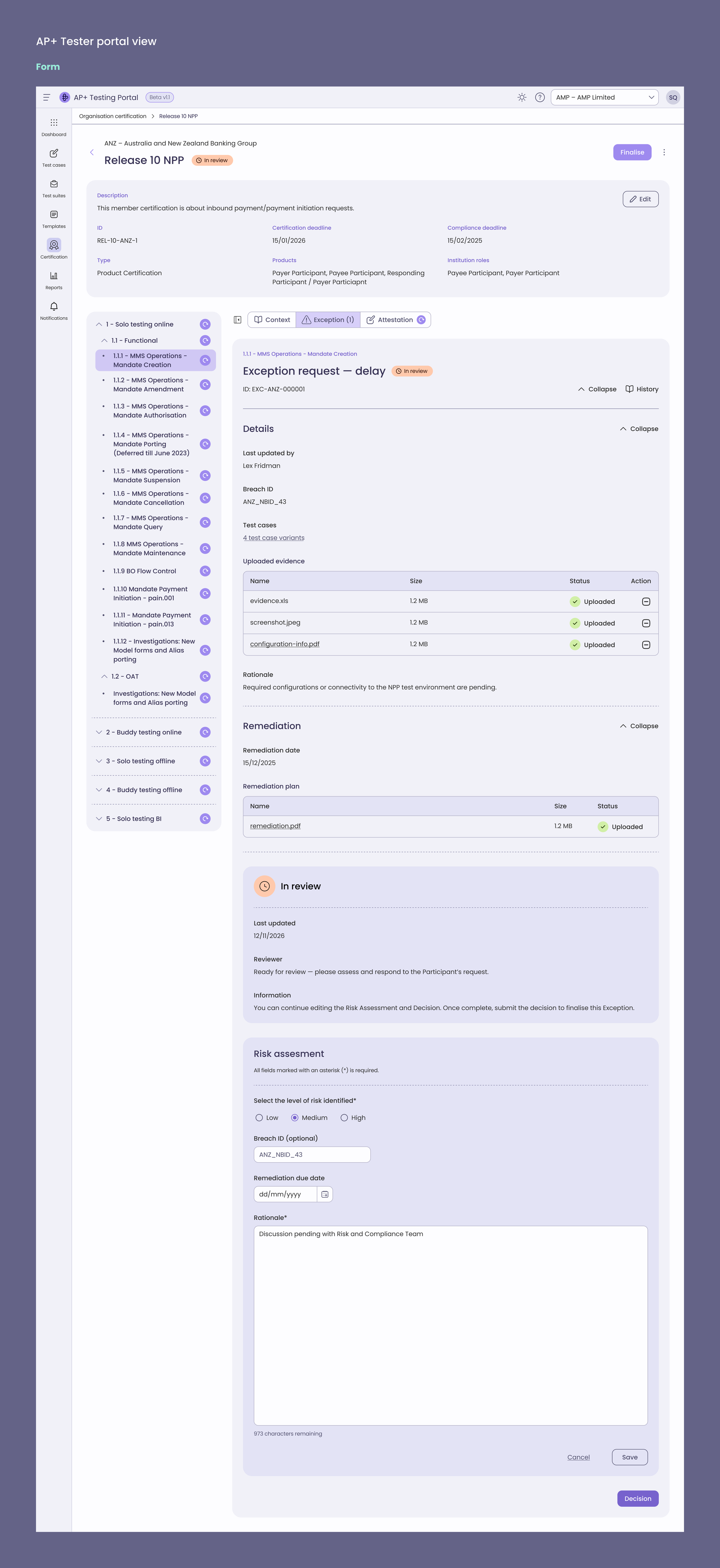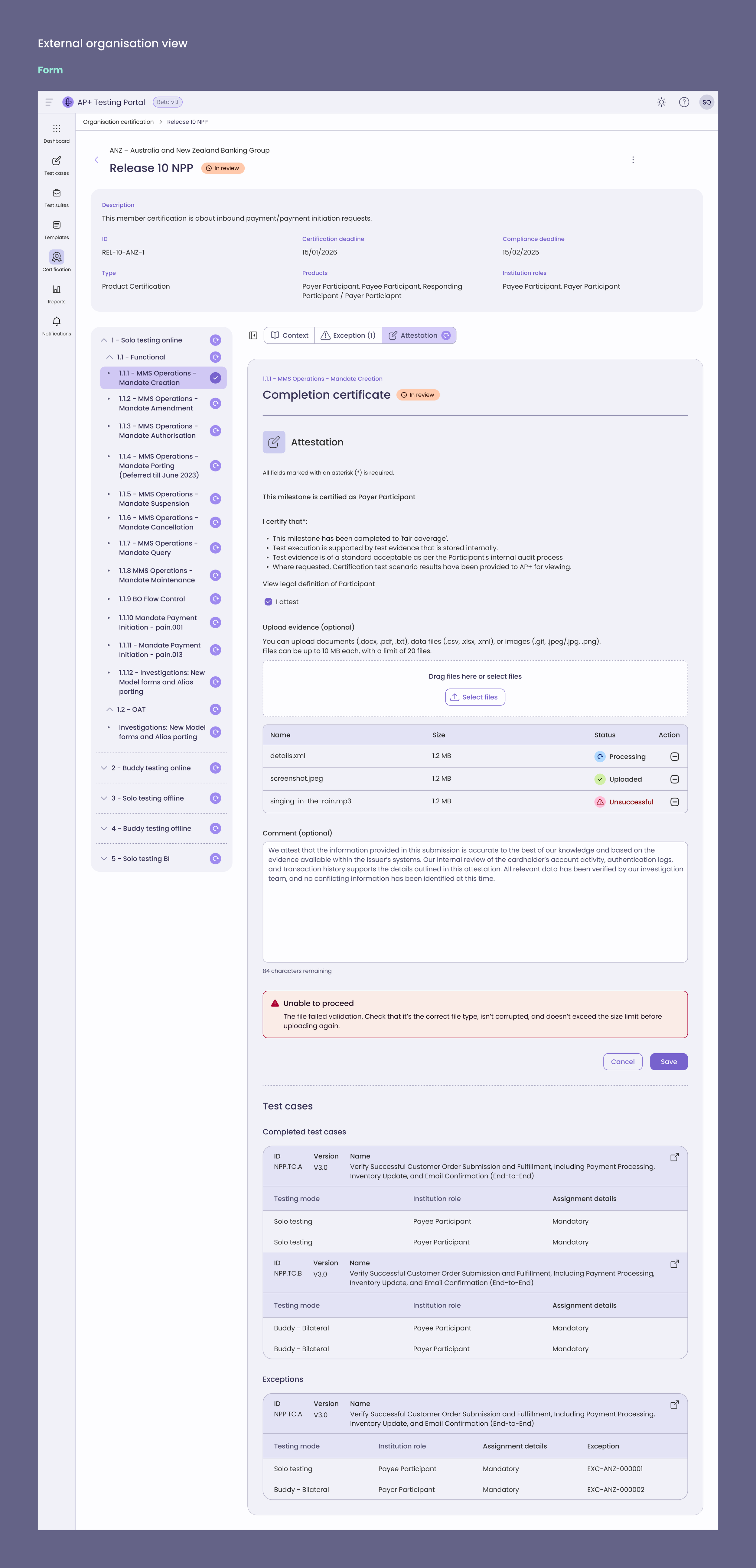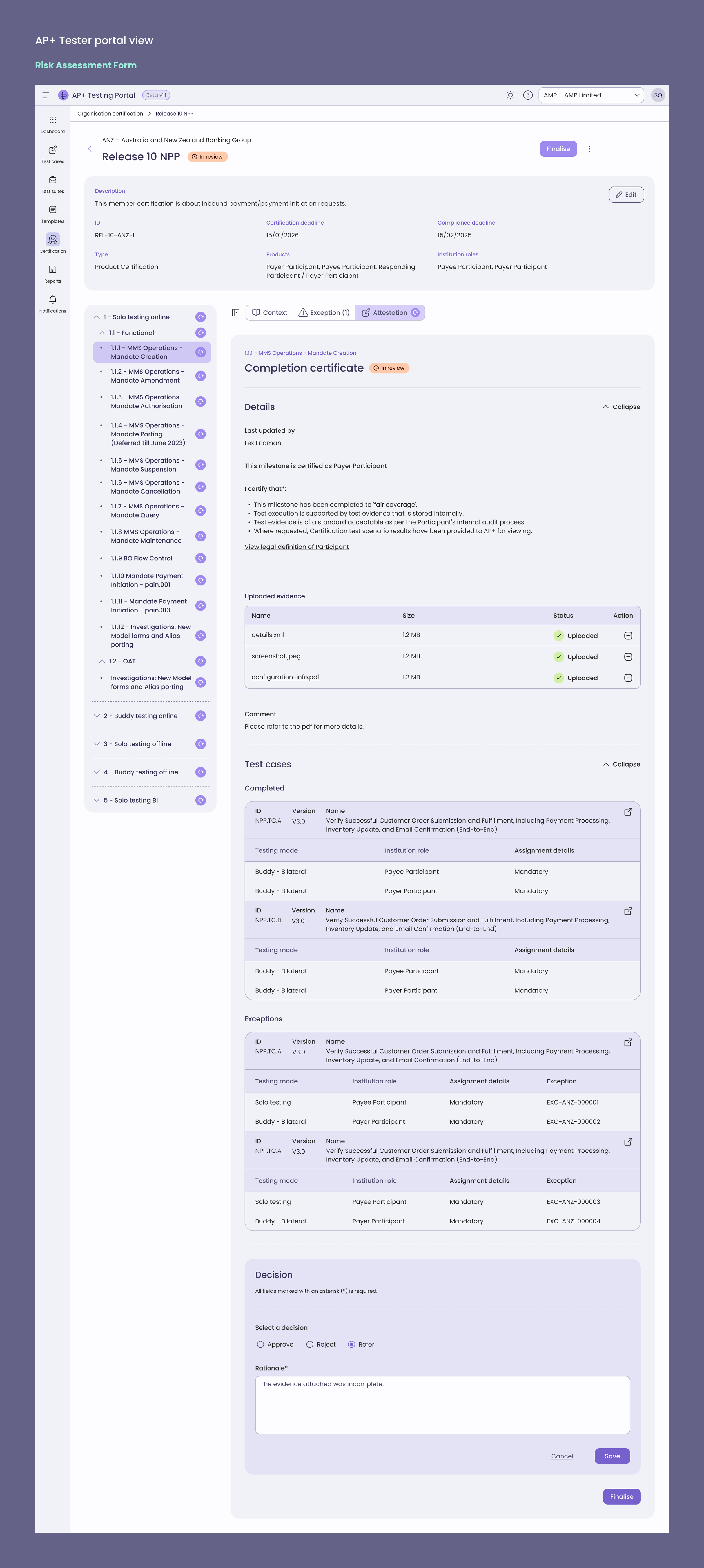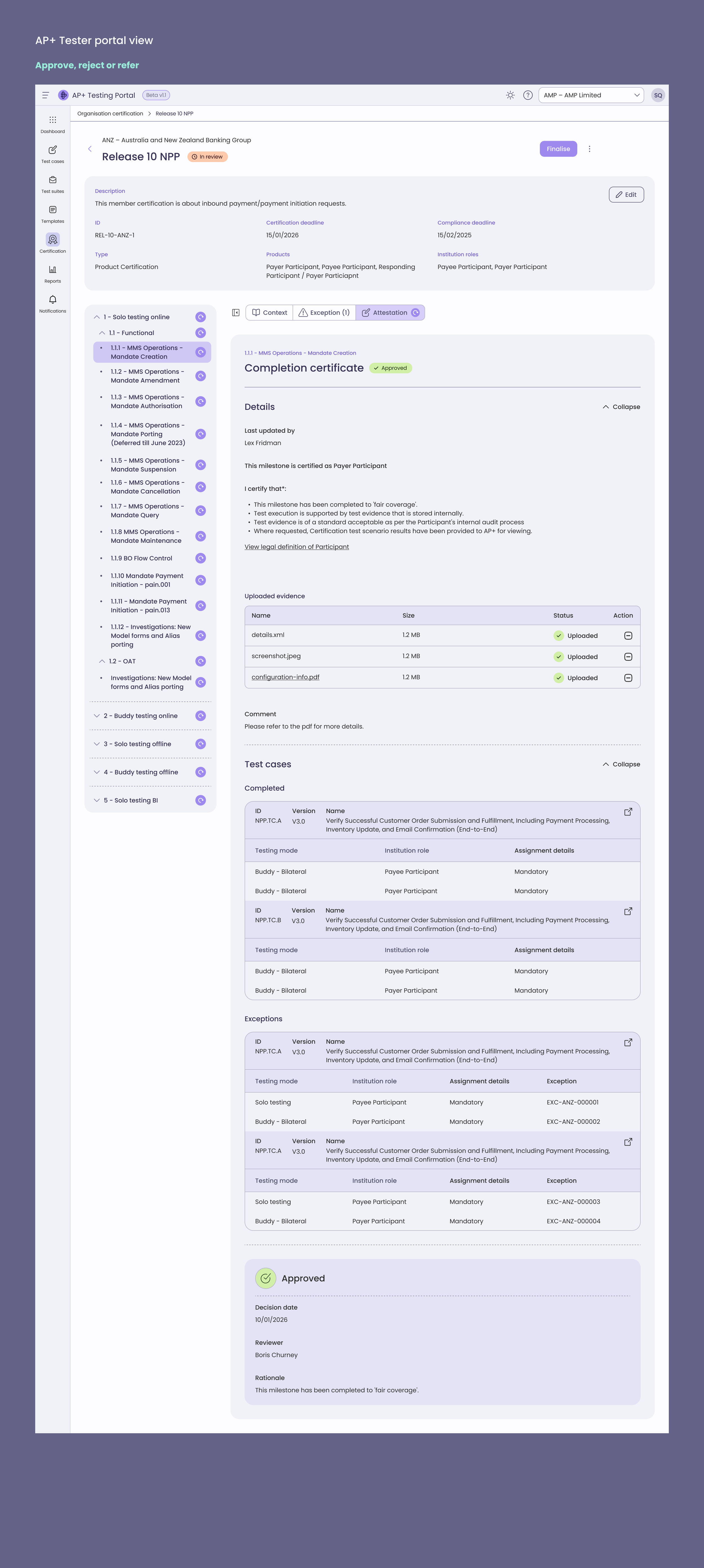AP+ Testing Portal
The AP+ Testing Portal at Australian Payments Plus is a non-mobile first web application built to replace manual, spreadsheet-heavy certification workflows.
It enables banks, fintechs, and merchants to self-serve certification against AP+ payment products, while giving AP+ admins structured tools for workflow templates, attestations, exceptions, and reporting.
By digitising certification, the portal reduced manual effort, improved transparency, and accelerated member onboarding across the AP+ ecosystem.
Problem
Before the Testing Portal, certification relied on manual spreadsheets and back-and-forth communication.
Participants: faced slow and long processes.
AP+ Testers: struggled with tracking attestations, exceptions, and progress through manual processes.
AP+ overall: suffered from integration delays and higher operational costs.
The challenge
To build a scalable, self-service web application that could handle complex certification workflows while meeting compliance standards (e.g., Reserve Bank of Australia).
AP+ Testers can create, edit, and manage templates with steps, tasks, test case linkages, dependencies, and reports.
Delivery
Contracted for the delivery of phase 2 of the Testing Portal, I helped delivered two key pillars:
Certification Workflow Template Management
AP+ Testers can create, edit, and manage templates with steps, tasks, test case linkages, dependencies, and reports.
Member Certification
Participants can view assigned workflows, complete attestations, raise exceptions, and track progress.
Built secure access hierarchies for managing permissions and documentation.
Approach to discovery
I joined the team at a time where the project is at Phase 2 — certification and organisation workflows. Phase 1 had been completed which was Test Case and Test Suite Management.
There was no budget for discovery and user research. The following details the approach I had taken within the scope.
User Journey Mapping
User feedback
Landscape review (study similar products and workshop the best ideas with stakeholders)
Scope
Stakeholders management
UX facilitation
Cross-collaboration
Content strategy
Information architecture
User interface and detailing
Figma-to-code workflow
User Journey
Facilitated stakeholder workshops to align on goals, constraints, and user needs for phase 2 of the project


User Feedback
As part of Phase 2, I ran feedback workshops with internal testers to understand how they used Phase 1 features (Test Case and Test Suite Management). The goal was to identify real-world frustrations and repetitive tasks that would inform the more complex Certification Workflow Management design.
Key insights included:
Bulk action gaps: need for faster clone, copy/paste, and multi-delete.
Navigation issues: the page resetting after edits and difficulty scrolling large lists.
Visibility needs: showing test names in list view and toggling field visibility.
Performance expectations: smoother pagination and load times for large datasets.
Validation clarity: clearer distinction between blocking errors and warnings.
These insights allowed Phase 2 designs to build on proven strengths while addressing usability gaps, creating a smoother transition from test case management to certification workflows.
Information Architecture
Based on the findings, mapped out how content and functions are organised before deciding how they look. The purpose was to prevent design from being driven by visuals instead of logic. This also ensure new features can fit into the system logically without breaking hierarchy
Identifies navigation gaps and redundancies early by gathering feedback from the cross-function team especially engineers.
Gives engineers a clear structural map of the product, so design and development decisions stem from the same logic.
Design System and design to code
Experimented and refined a figma-to-code workflow (Figma MCP server, GitHub Copilot)
Standardised variables and design system best practices, enabling smooth handover to engineers
Information architecture of the organisation workflow
Member Certification
User Problems
No single view of attested milestones, uploaded evidence, or exceptions.
Inconsistent review actions and comment tracking across reviewers.
Limited visibility on member progress and feedback history.
Solutions
Built a centralised review interface showing context, attested Test Cases, Exceptions, and Evidence in one view.
Added inline decision controls – Approve, Reject, Refer Back – with mandatory comments for traceability.
Introduced a refer-back workflow allowing members to revise submissions without losing version history.
UI Principles
Efficiency: Key actions surfaced inline to reduce navigation and review time.
Transparency: Shared visibility of comments, status, and evidence between both parties.
Consistency: Unified layout and states across attestation and review flows for a seamless experience.
Certification milestone
This context page provides external banks and merchants a clear, structured flow for completing each certification milestone by a deadline set by our internal users.
It displays required steps, linked test cases, statuses, and dependencies in one place, guiding Participants through what to do next and enabling them to progress confidently with transparency and consistency.
I designed a scalable structure for showing steps, tasks, and sub-tasks integrated with complex business logic for both external and internal facing views.
This ensures system scalability.
Banks or merchants raising exceptions
AP+ Tester approving the exception
Attestation
Impact
20–30% reduction in manual effort for internal testers by replacing spreadsheets with structured workflows.
Enabled self-service certification for banks, fintechs, and merchants, reducing onboarding friction.
Improved cross-functional collaboration by aligning design outcomes with team OKRs.
Designed end-to-end certification workflows supporting regulatory compliance.
Achievements
Refined and improved a figma-to-code process using Figma MCP server (Learn more on my substack)
Delivered production-ready Figma files, ensuring smooth handover to front-end engineers.
Demo best practices and systems thinking to designers and Frontend engineers to improve the above workflows (Dev mode, instructing ai model)
AI-enabled workflows:
OpenAI Custom agent - UX QA partner to produce reports of manual testing
Employ the use of Playwright in the code base to test acceptance criteria.
AI-optimised specifications and context driven coding workflow






